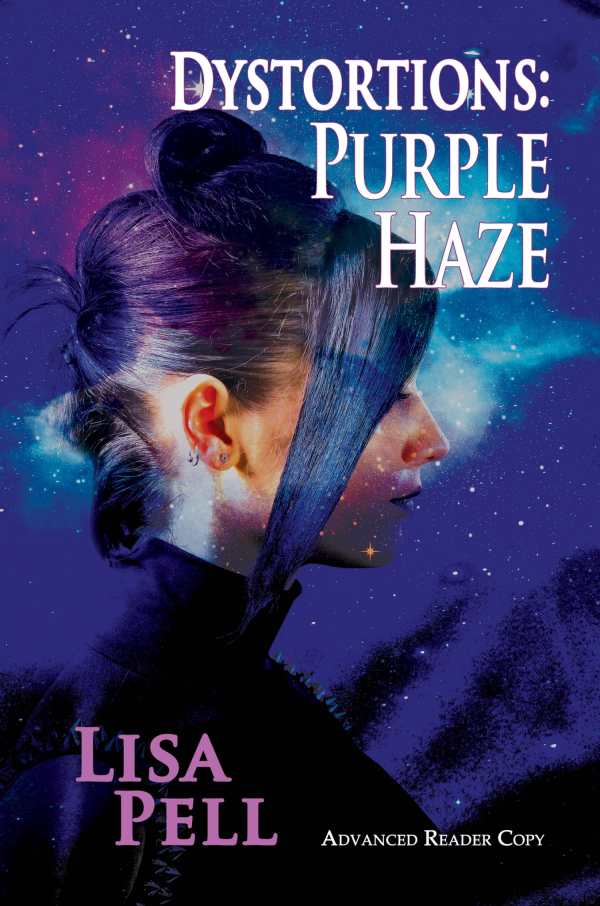Dystortions: Purple Haze
This alternate world—sharpening the positive, the grotesque, and the ridiculous—can be both wonderful and fascinating.
Lisa Pell’s science fiction novel Dystortions: Purple Haze has an intriguing premise that combines an eerily parallel history on an alternative world with the question of where creativity comes from.
The events take place on a planet named Malaprop, which feeds on and distorts news from another planet called Hearth. The primary thrust of narrative is Jon McGuiness, musical prodigy and genius, and his trajectory as part of a rock-and-roll sensation called the Scarubs, an insect-named band demonstrating the first of many alternate almost-parallels.
The mature-before-his-years genius passes himself off as older than he is to play in bars with his bandmates, and marries an older woman (who’s still a teen). The band lives through and participates in world-changing events as their popularity and celebrity soar.
Jon’s story is framed within the story of Addy O’Malibul, who is convicted of murdering her neighbor and finds herself in a prison / purple hotel room with a minibar / kinky sex room reminiscent of another familiar best seller. Addy watches a documentary on Jon’s life and work. A twist near the end makes Jon question the source of his own creative genius and provides a strange tie to Addy.
The premise and the weird reflection/refraction of familiar world events that shaped history seen through the prism of the alternate world—sharpening the positive, the grotesque, and the ridiculous—can be both wonderful and fascinating. Unfortunately, the framework of watching Addy watch the documentary creates a remove that destroys the emotional impact of potentially scathing, penetrating commentary. Too much of the book is narration instead of active scenes.
When there are active scenes inserted into the narrative, the dialogue is crisp and funny, driving the story and revealing the character. Band members Jon, Paul, George, and Starsky, the book’s “Fad Four,” are well drawn, memorable in their parallels to Earth’s recognizable “Fab Four” while still different enough to be distinct characters.
Supporting characters such as Nick Dagger of the “Mossy Rocks” and references to events such as the “Bietnom War” and the homicidal cult leader “Branson” are familiar enough to recognize, but off-kilter enough to feel like looking into a fun-house mirror. Inserting Jon into important world events so that he can be the hero (or at least the survivor) supports the prodigy/genius theme.
Still, there aren’t enough scenes spotlighting the characters in active situations to balance the distancing narration. Inserting Jon’s heroism into the disturbing depiction of the alternate 9/11 sidelines the first responders and diminishes them. Clues to the connection between Jon and Addy are dropped early and then ignored, so the reveal feels like a false plot twist instead of an organic build.
The book will appeal to those who enjoy alternate history and political satire, especially when they’ve lived through the actual events.
Reviewed by
Eva Schegulla
Disclosure: This article is not an endorsement, but a review. The publisher of this book provided free copies of the book and paid a small fee to have their book reviewed by a professional reviewer. Foreword Reviews and Clarion Reviews make no guarantee that the publisher will receive a positive review. Foreword Magazine, Inc. is disclosing this in accordance with the Federal Trade Commission’s 16 CFR, Part 255.

